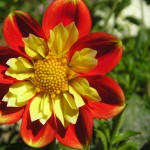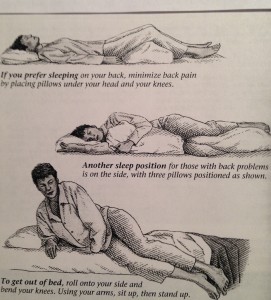Thought of the day

What lies before us and what lies behind us are small matters compared to what lies within us.

What lies before us and what lies behind us are small matters compared to what lies within us.
Optimal daily fiber intake is 25-30 grams.
An example of one days’ meals with fiber would be: Breakfast– Allbran cereal(13 grams) or Fiber One( 18 grams) with berries (1cup blackberries-9 grams) Lunch- a large salad (3 grams))and vege soup (3 grams) with beans (19 grams) Dinner– broccoli (1cup-7 grams) and chicken or fish. Total over 50 grams.
Apple medium raw – 4 grams
Artichoke – 1 large cooked 4.5 grams
asparagus- 1 cup 3.5 grams
Avocado- 1 cup 11 grams
Black beans cooked 1 cup- 19 grams
kidney beans, pinto, chickpeas – 1 cup- 12-19 grams
Blackberries 1 cup 9 grams
Broccoli 1 cup cooked- 7 grams
celery 1/4 cup- 2 grams
eggplant 2 large slices- 4 grams
3 dried figs- 10 grams
cooked kale, chard 1 cup- 8 grams
whole wheat macaroni 1 cup 5.7 grams
1 medium yam- 7 grams
Other sources of fiber are: Psyllium seed husks, metamucil, citrucel. One tablespoon provides approx. 15 grams. These must be taken with at least one large glass of water because they absorb water in order to work properly. Fiber assists the body in clearing excess cholesterol, binds with sugar to regulate and decrease blood sugar, and speeds transit time to clear out toxins and soothe constipation. Seeds are lubricating because of their fiber and oils: pumpkin, sunflower, sesame, flax and in chinese herbology, the nature of seeds is to descend qi thereby assisting elimination.
Gluten sensitivity– celiac disease- inflammation to the GI tract that is aggravated by eating foods with gluten -wheat, barley,rye,and oats. By avoiding those foods the GI tract inflammation can resolve. Choosing alternatives such as: basmatic rice, brown rice, millet, corn, buchkwheat/kasha, quinoa.

by Lama Surya Das
The Buddha was once asked, ” What do you and your disciples practice?” He answered, “We sit,we walk and we eat.” The questioner was confused. “Doesn’t everyone sit, walk and eat?” he asked. “Yes”, replied the Buddha, “but when we sit, we know we are sitting. When we walk, we know we are walking. When we eat, we know we are eating.” This is the essence of mindful living. If you were to visit Plum Village, Thich Nhat Hanh’s Zen Meditation Center in Escondido, you would notice that mindfulness bells ring throughout the day to remind everyone to slow down and be aware of the present moment. Whenever the gong sounds, everyone stops what he or she is doing, takes three breaths and practices a moment of mindfulness. You don’t need a gong, however, to experience life more deeply. You can take ordinary moments in your day and, through simple rituals, turn them into moments of mindful awareness.
1. Mindful waking up Each day presents a new opportunity to awaken in a sacred manner. You can intentionally begin your day in a more mindful fashion. The term “Buddha” in fact, means “the awakened one”. Each morning as you wipe the sleep from your eyes, you can remind yourself of what it means to truly become and stay awake. The inner light of awareness never sleeps. The little Buddha within each of us is always bright-eyed and ready to go. So wake up, get settled in the moment and take three mindful breaths.
2. Mindful Toothbrushing Stand in front of the mirror. Take three breaths in and out, relax for a moment and look into the mirror with fresh eyes. See who is there. Now brush your teeth mindfully. Be gentle, slow and careful. Pay attention. Give yourself a little smile to start the day. It’s a good day! Enjoy yourself.
3. Mindful Bathing As your approach your morning shower, reflect upon the many sacred rituals in which water plays an intrinsic part. Water is used to both bless and anoint. You can partake of its blessings through a tranformative moment of calm, mindful reflection as you wash. Stop for a moment beneath the showerhead with the water running over your head and face. Become aware of your feelings. Drop your hands. Just stand there. Breathe in and out a few times. Relax and feel the hot water running over your head, neck and shoulders. Listen to the water, let it wash away all your thoughts and dissolve into the present.
4. Mindful eating Mindfulness while eating is an ancient spiritual practice. In Asia, some Buddhists practice chewing each mouthful of brown rice a hundred times before taking the next bite. Being mindful while eating can help you experience the taste, texture, and temperature of what you put in your mouth. It helps you become aware of how, when and why you nourish yourself. When you sit down to eat, take three breaths to remind yourself to enjoy a moment of mindfulness. Smile and appreciate this little moment of grace. For the first bit or two, try chewing your food fifteen or twenty times. How does it feel? How does this food taste? Are you getting nourshed? Be grateful for this moment. By opening up to it, you can fully experience it.
5. Mindful driving When you first sit down in the car, take three easy breaths in and out through your nose. Count the breaths to yourself. Be mindful and aware of what you are feeling. Fully inhabit your experience. Know where you are. Look out the window. Is the sun shining, is it raining? Look around, pay attention to what you see. Don’t jump ahead and outside of yourself, trying to get where you’re going before you’ve even begun the journey. Stay right where you are. You are present and fully accounted for right now. Make the most of it.
6. Mindful coffee/tea break Whether it’s a coffee or tea break, a visit to the restroom, or simply a short walk up and down the hall to stretch your legs, you need time during the day to reconnect to who you are. So whenever you feel that things seem to be spinning out of control, just stop, be mindful and breathe in and out three times. If there is a window, look out and practice your three breaths while you gaze at the view. Use this time to regain your balance and sanity, collect youself and rearrive in the present moment. Let the fresh air in and the stale out. Regain your sense of humor by making a funny face at yourself. Laughing, after all, is a way of loving.
7. Mindful homecoming When you return home, rejoice. Stand in front of your door and appreciate the moment of your arrival. Breathe in and out three times. Mark the passage and completeness of the circle. Just be there for a moment. Now open the door and step inside. Home is a temple, enter your sacred domain. Come home to yourself.

One who knows when enough is enough always has enough.
 One-third of your life will be spent in bed. What sleep position is best? Sleeping on your back, with a pillow under your knees, is one of the least stressful positions and is usually recommended for proper spinal alignment. In this position it is best to avoid too many pillows that can force the head forward and place stress on the upper back and neck. Sleeping on your side, with a pillow between your bent knees is another good position. This is the best position for those with low back pain. Finally, sleeping on ones’ stomach is not recommended because it causes undue stress on the joints of the neck, shoulder and low back, which may result in morning stiffness in those areas.
One-third of your life will be spent in bed. What sleep position is best? Sleeping on your back, with a pillow under your knees, is one of the least stressful positions and is usually recommended for proper spinal alignment. In this position it is best to avoid too many pillows that can force the head forward and place stress on the upper back and neck. Sleeping on your side, with a pillow between your bent knees is another good position. This is the best position for those with low back pain. Finally, sleeping on ones’ stomach is not recommended because it causes undue stress on the joints of the neck, shoulder and low back, which may result in morning stiffness in those areas.
New mattresses are recommended after 7-8 years or when you awaken in the morning often with body aches and stiffness. Before you purchase your mattress talk to Dr G.
1.Let go of your worries– Just writing down worries, deadlines, or to-dos before hitting the pillow can make them feel more manageable.
2. Cut the light at night– avoid bright light, which signals the brain to be alert, within an hour of bedtime . Have your bedside lamp have no more than 45-60 watts. Use nite lights in the bathroom or hallways. Use blackout drapes or shades. Cover any small lights from phones or computers.
3. Warm bath or shower after work, to separate the day from the evening. Then adding lavender to your pillow or sheets.

Be Where You Are….
When you are taking a shower, check and see if you are in the shower. You may already be in a meeting at work. Maybe the whole meeting is in the shower with you. -Jon Kabat-Zinn
Have you ever sprained an ankle? The resultant swelling and pain are consequences of muscle strain, joint irritation, ligament injury and blood vessel damage. What’s the first thing you do? Hopefully, you answer R.I.C.E. That is rest, ice, compression and elevation. All of these are designed to help limit inflammation, decrease swelling and promote healing.
Now, let’s expand our thinking above the ankle. Spinal joints become inflamed and swollen when traumatized. Trauma in this sense can be an acute injuty or chronic postural stresses. Both lead to subluxation, abnormal joint mechanics and inflammation.
The small spinal joints are in such close proximity to spinal nerves that once inflamed, they can swell to such an extent that they put pressure on delicate nerve roots. This leads to local pain and often to pain and/or problems in other areas of the body.
So what’s the first thing you do with inflamed spinal joints? Right, put ice on them. In doing so, you will cut days to weeks off your recovery time and limit future disability. Also, always put the ice in a pillow case, to avoid freezer burn to the skin. Ice usage is usually 20 min on each hour until pain subsides, then 1-2 x a day, especially on the day of an adjustment. If when you ice you feel chilly elsewhere, put heat on your feet, that will warm the rest of you up while icing the injured area. Also, if you do use heat on the injured area, keep it to 20 min to avoid causing further swelling of the area. Any other questions always feel free to call.
Tennis Ball Technique:
Find a comfortable position either on the bed or floor, lying face up, with your knees bent -so that your feet are on the bed or floor. Using two tennis balls, place them just below your waist at the same level on either side of your spine (not on your spine). Tilt your hips slightly (like the beginning of a pelvic tilt) to slightly flatten your lower back onto the balls. Gently rock your knees side to side, you will feel them massaging your lower back muscles. As one level of the low back releases move the tennis balls a bit higher up the spine and repeat the rocking motion until that area also releases. At each level, take several deep breaths in then out, this will also help the muscles release. You can spend as much time at each level until you feel that area relax. If the pressure is too strong move from the floor to the bed. If the pressure is too soft vs versa. Remember to let the weight of your body do the work.
Noodle technique:
Find a swimming plastic foam noodle (cut one in half so it’s around 3 ft vs 5 ft long). To start lie on the bed, if the pressure doesn’t feel strong enough you can move to the floor later. Lie on your side, with your knees bent, place the noodle perpendicular and under the thigh you are lying on, gently rock just a bit and you will feel the side muscles of your thigh begin to release. These are the muscles that tighten when we sit or stand for prolonged periods of time, so it’s great to pack if you’re going on a trip along with the tennis balls. You can experiment with other muscles of the legs, arms, hips. We can go over that at your next appointment.
Golf ball technique:
Is helpful for the bottom of the feet, for releasing plantar fascitis, or after prolonged sitting or standing. You can keep one at your desk and every 30 min use it to keep the circulation moving. While seated place the ball under your foot, leaning a bit forward to put more weight onto your foot, find a point that is tender and stay at that spot til it releases. You can also rock your foot a bit back and forth over that point. Then once it releases move to another point including the arch, heel and ball of your foot. Also for Plantar Fascitis: place a small water bottle 3/4 full in the freezer, then after walking or in the evening , use it similarly to the golf ball, rolling it on the bottom of your foot to soothe inflamed foot.
Anytime you experience pain, discontinue the exercise and discuss it and any other questions you many have with me at your next appointment.

Gratitude unlocks the fullness of life. It turns what we have into enough, and more. It turns denial into acceptance, chaos to order, confusion to clarity. It can turn a meal into a feast, a house into a home, a stranger into a friend. Gratitude makes sense of our past, brings peace for today, and creates a vision for tomorrow. -Melody Beattie

Arriving at your own Door
The time will come when, with elation, you will greet yourself arriving at your own door, in your own mirror, and each will smile at the other’s welcome.
and say, sit here. Eat. You will love again the stranger who was your self. Give wine. Give bread. Give back your heart to itself, to the stranger who has loved you
all your life, whom you ignored for another, who knows you by heart. Take down the love letters from the bookshelf,
the photographs, the desperate notes, peel your own image from the mirror. Sit. Feast on your life.
-Derek Walcott (included in Jon Kabat-Zinn’s “Arriving at your own door-108 lessons in mindfulness”

Simplicity brings more happiness than complexity. -Jack Kornfield
The following are best eaten organic ( pesticide residual more prevelant):Apples, pears, peaches, nectarines, strawberries, raspberries,cherries, grapes. Celery, peppers,green beans, potatoes, spinach, lettuce, cucumbers, squash, pumpkin.
The following are ok to eat non-organically: Bananas, oranges,tangerines, grapefruit, melons, watermelons, plums, kiwis, blueberries, mango, papaya. Brocolli, cauliflower,cabbage,mushrooms, asparagus, tomatoes, onions, eggplants, peas, radishes, avocado.

Love wholeheartedly, be surprised, give thanks and praise then…you will discover the fullness of your life. –Brother David Steindl-Rast

Take rest; A field that has rested gives a beautiful crop. -Ovid

Random daily and fasting normal blood sugar should be <100 Prediabetes fasting blood sugar range100-125 Two morning readings in a row> 126 Diabetes
After a meal blood sugar rises to a peak within 15-30 min then returns to normal within 2 hrs. If the peak occurs later 45-60 min after a meal=insulin deficiency
High insulin levels promote: high blood fats, high blood glucose, high blood pressure. high levels of inflammation. High blood glucose can cause dry itchy skin because it causes the body to eliminate the sugar through frequent urination therefore causing dehydration of the skin. Therefore, drinking more water helps counteract the dehydration.
High insulin levels cause more glucose to be stored as fat. By balancing blood sugar and insulin levels, with less high and low fluctuations, assists in weight loss. Caffeine, artificial sweetners, nicotine all increase insulin levels causing more blood sugar fluctuations.
Blood sugar stabilizers include: acid foods-vinegar, pickled foods, salad dressings with 4 tsp vinegar and 2 tsp oil, lemon juice : slow digestion and therefore keep blood sugar balanced. High acid fruits: strawberries, grapefruit help balance also. Fiber in foods slow digestion assisting in blood sugar stabilization: barley, oats, apples, lentils, beans, green vegetables and ground flax seed.
Exercise- Just 30 min of daily exercise lowers the risk of diabetes by 60%.
The New Glucose Revolution Shoppers Guide to Glycemic Index Values- by Dr Jennie Brand-Miller Also, her book: The New Blood Glucose Revolution. Excellent guides. The best life diet and guide to Diabetes and Prediabetes– Bob Green, Very helpful website –Diabetes articles, from a first hand author: www.Mendosa.com

If your compassion does not include yourself, it is incomplete. -Jack Kornfield

People usually consider walking on water or in thin air a miracle. But I think the real miracle is not to walk either on water or in thin air, but to walk on earth. Every day we are engaged in a miracle which we don’t even recognize: a blue sky, white clouds, green leaves, the black, curious eyes of a child-our own two eyes. All is a miracle. –Thich Nhat Hanh
Essential oils– It takes approximately 50 lbs. of plant material to make 1 lb. of essential oil. So they are very powerful and must be used in small doses and diluted. The oldest record of their use was by the Sumarians 4,000 yrs ago. The expression ” anointed with oil”, is one of the many references from the Bible where essential oils were used. Sandalwood, for example, was used to cool and calm the mind from worry and also as an aid to meditation and prayer because it elevates the mind to a higher spiritual plane.
Because plants are unable to move and yet need to protect themselves from outside insects, their essential oils often have anti-viral, anti-bacterial, anti-fungal and anti–parasitic properties. In addition to their physical properties, the oils have emotional well being properites.
A few examples of relaxing oils: lavender and orange oil. Calm the mind and normalize feelings of pressure and agitation. Examples of energizing oils: peppermint, grapefruit, and rosemary. They clarify the mind to normalize poor concentration, memory, and frustration, allowing the spirit to be lifted and morale boosted.
It is of utmost importance when using oils on your skin that you determine if they are pure essential oils. Whole foods and our office carry (Aura Cacia-an excellent brand). To test an oil: add a drop of the oil to a tablespoon of water, if a milky slick appears the oil is either synthetic or is mixed with other ingredients. Also, you can place a drop of oil on paper, if the paper has a grease stain after 2 hrs, it’s been diluted with other oils.
How to use the above oils: it is best to use 3 drops of the essential oil in either 1-2 tablespoons of a carrier oil (almond oil or jojoba) then you can put a drop on your forehead, chest, inner wrists, feet, or in a bath just before getting into it. Also, you can put 3 drops in a 4-6 oz. spritz bottle and fill with water. You can then spray on your neck, arms, on pillow, sheets (lavender esp. at nite to relax for sleep) or in the air to re-awaken you in the late afternoon (peppermint or grapefruit)
If you have very sensitive skin but still want to use them try the following: You can put the oil on a piece of cotton or a handkerchief and smell it directly. This is very helpful for patients in the hospital. Hospital smells may not be pleasant and bringing a nice hanky in a plastic baggie with some essential oil on it will help raise their spirits and speed healing. (That’s why the custon of bringing flowers and nosegays to people in hospitals began) Some people don’t like certain fragrances, so it’s nice to bring both lavender and grapefruit, usually one will appeal to them. Eucalyptus oil has very strong anti-viral and anti-bacterial properties, so putting it on a hanky in a baggie is most helpful with plane travel to inhale throughout the journey, to counteract the recycled air.
Essential oils- related to the Chakras (spirit energy centers)
Our sense of smell: Although you can see or hear something at a longer distance than you can smell it, our sense of smell is approximately 10,000 times more acute than our other senses. Within a minute of smelling a scent it is registered in our brain along with physical or emotional reactions. There are essential oil fragrances that relax us and others energize us. Examples: lavender relaxes us, mint energizes us, and grapefruit uplifts our spirits.

In life what sometimes appears to be the end is really a new beginning.